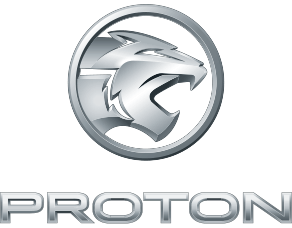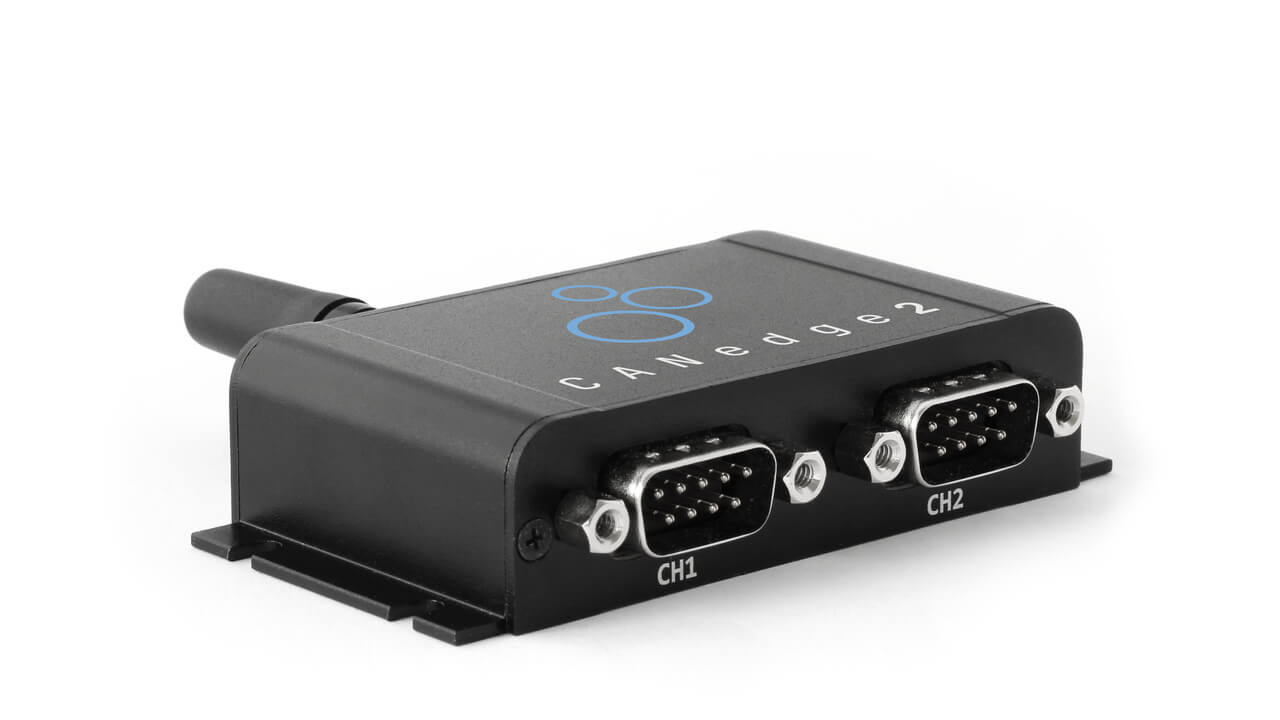LIN Bus Data Logger - Low Cost CAN/LIN Analyzer [Hybrid]
Need a professional, low cost CAN/LIN bus data logger?
LIN (Local Interconnect Network) is a fast-growing, low cost supplement to CAN bus - and LIN master/slave networks play a critical role in automotives today. As such, a CAN/LIN hybrid data logger is a vital tool for any vehicle OEM development team.
Below we outline key benefits of CAN/LIN hybrid logging - and why the CANedge is the best value/cost solution on the market.
Top 4 benefits of hybrid CAN/LIN logging
The CANedge is extensively used by vehicle OEMs - and for CAN/LIN hybrid logging, below benefits are key.

Decluttered test vehicles
By using a hybrid CAN/LIN data logger, vehicle OEM engineers can log all CAN/LIN data with one tool, minimizing cable clutter and installation time

Full picture diagnostics
When debugging automotive bus communication, combining CAN/LIN logging can save time as it provides a holistic view when diagnosing issues

Simpler post processing
By combining up to 2xCAN + 2xLIN channels into one single file, it is simpler to post process data - and to compare data across each network

Faster time to market via scale
By using a low cost and compact CAN/LIN SD card data logger, it's possible to perform large-scale field tests and reduce time-to-market
Want to get input on your CAN/LIN logging use case? Reach out for free sparring!
Contact usWhy use the CANedge?
The CANedge CAN bus data logger offers optional GPS/IMU, WiFi and/or 3G/4G - ideal for CAN/LIN logging:
Log data out-the-box. Standalone. Link your vehicle to your server in <2 minutes
Extractable 8-32 GB SD. 2xCAN/LIN. CAN FD. Zero data loss. 50 µs RTC. Error frames. MF4
Only 8 x 5 x 2 CM. 100G. Robust alu enclosure. 5+ LEDs. Configurable 5V power out (CH2)
Built-in GPS/IMU. 3x accuracy via sensor fusion. Position, speed, distance & more
CAN/LIN logger use case examples
Vehicle CAN/LIN tests - at scale
Need to test your prototype ehicle fleet at scale?
The CANedge CAN/LIN analyzer is ideal for late-stage field testing of vehicles and automotive equipment. The small device lets you record data from a total of 4 individual buses (2x CAN + 2x LIN), drastically reducing costs. Further, the device is 100% standalone - meaning it can be installed in real usage setups. Data can be collected to an extractrable SD card - and with the CANedge2/CANedge3, the data can be uploaded via WiFi/LTE, respectively, to your own server. This enables analytics across an entire fleet of test vehicles for near real-time analysis (e.g. in telematics dashboards). Further, the CANedge can serve as a LIN Publisher (aka LIN Master), letting you perform remote over-the-air configuration changes to your LIN clusters.
Diagnosing rare issues
Trying to identify a rare issue in your LIN-based application?
LIN bus is used extensively, both in automotives (e.g. climate control, doors, wipers comfort) and in industrial automation (e.g. manufacturing equipment). In both types of applications, rare errors can arise - and they may be extremely difficult to diagnose. With cyclic logging, you can connect a CANedge to your application and let it record up to 8-32 GB worth of data. If the issue occurs, you can extract the time stamped data to gain full insight in the network before, during and after the issue.

Case study: CAN/LIN telematics

Learn how Proton uses the CANedge2 to record CAN/LIN data from their vehicle ECUs during field usage for R&D and diagnostics.
"The CANedge2 is a fast solution for troubleshooting - with impressive support from CSS Electronics!"
full case study 50+ case studies
FAQ
Yes, the CANedge can serve both as a LIN Subscriber (aka LIN Slave) and LIN Publisher (aka LIN Slave). You can thus e.g. use the CANedge to trigger data responses from other LIN nodes, providing an easy method for controlling and configuring a LIN bus system. With the CANedge2, the configuration can be updated over-the-air, meaning you can essentially control your LIN bus system remotely.
The LIN modes can be configured completely independently on both channels.
The CANedge supports standard LIN frames including LIN frames of custom length. In a future firmware update we expect to add support for LIN error frames and other special LIN frame types.
The CANedge2 is designed as a LIN 2.0 compatible device, but it will be usable in LIN 2.1 and LIN 2.2 networks as well in Subscriber mode.
Automotive development and vehicle telematics are historically two fairly separate markets. However, the CANedge offers a bridge between the two segments by providing pro level CAN/LIN logger specs - with state-of-the-art wireless data transfer.
Further, the device gives you 100% control over your data. The data can be encrypted on the SD card and sent via secure HTTPS to your own server. You do not pay any monthly fees - and at the same time you own everything. This makes it ideal for sensitive OEM development purposes. On top, you can use powerful free tools like the open source telematics platform CANcloud and open source dashboards via Grafana.
The CANedge serves as a LIN interface by letting you log LIN bus data from any LIN 2.0 based network to an SD card. When logging from e.g. LIN control devices, you specify the bit rate of the LIN network and connect the device via a suitable adapter cable - see the connector pin-out here. By splitting the two DB9 connectors, you are able to log data from both 2xCAN and 2xLIN channels in parallel, in contrast to most CAN/LIN devices that only support e.g. 2xCAN, 2xLIN or 1xCAN/LIN. Once connected, the CANedge logs all broadcasted LIN frames on the bus.
The recorded data is stored on the device SD card in an MDF4 log file (Measurement Data Format). This lets you record all your data in a single file across the channels. You control the file split size/time (you can e.g. create a new log file every 5 MB or every 2 hours). When you wish to analyze your data, simply extract the SD card from the device and insert it into your PC.
The data can then be loaded in e.g. the asammdf GUI/API and converted using e.g. DBC files. You can also use one of our simple MDF4 converters, which let you drag & drop log files to create copies in popular formats (*.csv, Vector *.asc, PEAK *.trc). This way you can e.g. load your log files in CANalyzer, CANape, PCAN-Explorer and other tools.
The CANedge logs raw CAN and LIN frames to the SD card. This data is not by default easy to interpret - but rather it needs to be converted via software/APIs. As part of this process, you load the raw log file data along with a suitable "database" of conversion rules.
For CAN bus data, this database is typically a CAN database file, aka a DBC file. The DBC format is standardized method for storing information required by various CAN software to decode raw CAN frames into human-readable form.
For the LIN protocol, the conversion rules can in principle also be stored in the form of a DBC file. However, within LIN networks, a LIN Description File (LDF) is often used. The LDF serves to describe various aspects of a LIN network - and can be loaded in the same way as a DBC file in various tools.
For more technical details on LIN bus, see our LIN bus introduction or the LIN Wikipedia article.
The CANedge serves as a highly configurable LIN analyzer and allows you to configure custom bit rates per LIN channel. The device supports the following rate: 2400, 9600, 10400, 19200.
Most automotive networks are comprised of one or more CAN buses (for safety-critical functionality like the powertrain) and multiple LIN slave/master networks (for parts of the vehicle that are not safety critical, e.g. climate control). For example, a set of LIN slave nodes in your car door may control things like the side mirrors, door locks etc. These nodes are typically controlled by a LIN master, which is again hooked up to the main CAN network in the vehicle.
With a hybrid CAN/LIN logger, you'll be able to record data from each network in isolation, thus providing you full holistic insight for your development purposes. Further, because the CANedge is low cost, standalone and compact you can easily install multiple in parallel in more advanced development applications.
Ready to simplify your CAN/LIN logging?
Get your CANedge today!
